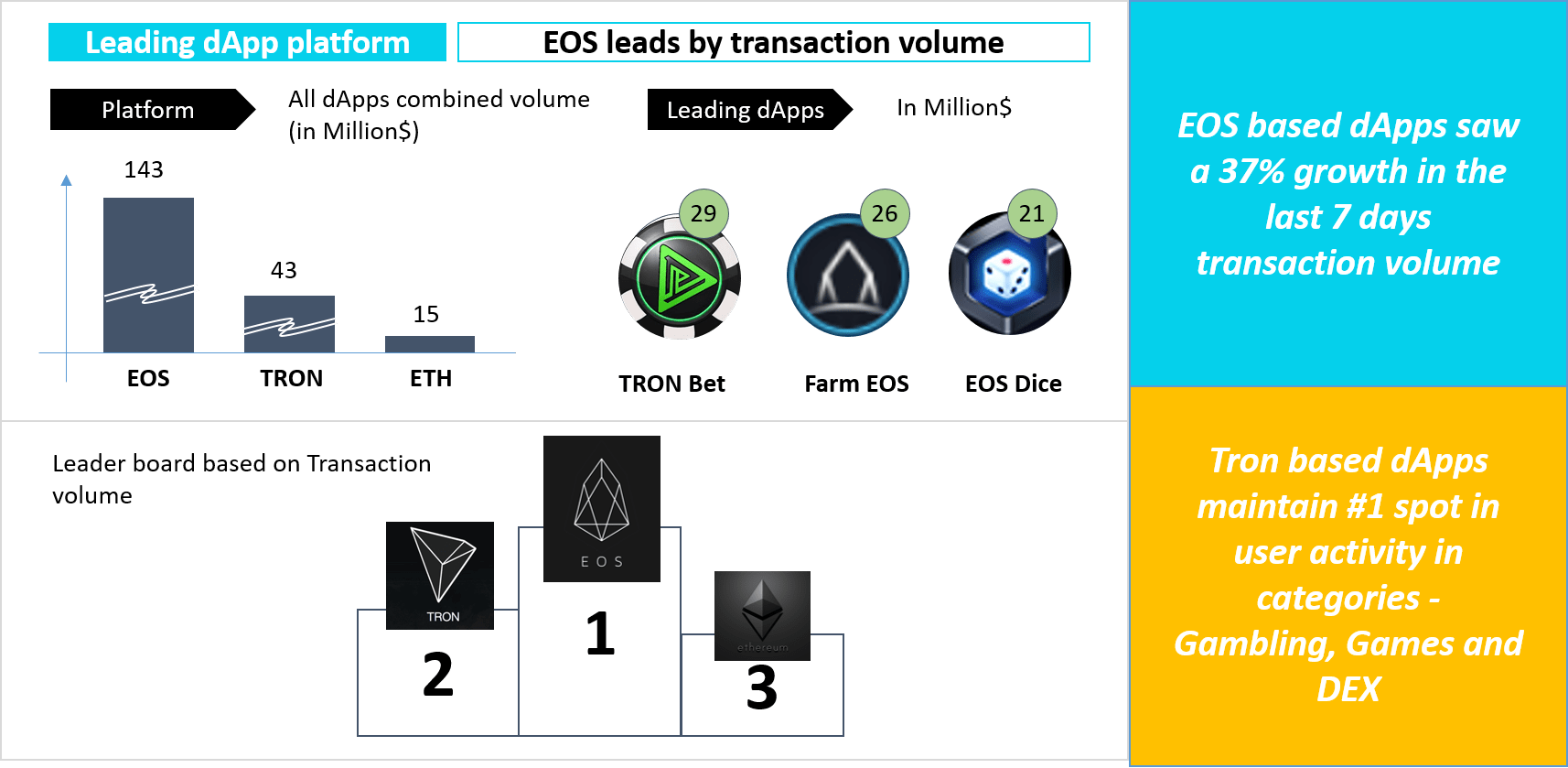EOS continued network congestion may force dApps to move elsewhere
EOS platform, a popular choice for hosting dApps is facing severe network congestion due to one dapp, EIDOS. Similar to what Cryptokitty did to the Ethereum network, EIDOS dapp has blocked the entire network since Nov 1st by taking up most of the transaction processing.
EOS network known for speed and no cost for transactions, now users cannot access their accounts and requires more than 30 EOS at stake to perform a single transaction each day.
The continued trouble has declined EOS userbase. Once closely competing with TRON for the top spot, EOS dApps have rapidly lost their userbase. Based on the last 7 days of user activity, EOS has the lowest user base among ETH and Tron.
Platform stats:

The ongoing congestion problems in the network have now forced some EOS dApps to reevaluate their options. One of the EOS’s dApp EarnBet has even issued a notice to the block producer that if in 30 days the problem is not fixed, they will leave the EOS network.
Due to congestion issues, currently, EarnBet.io can only support 3-4 simultaneous bettors at once. More than this ceases the contract function.
Reason for congestion:
In order to do anything on EOS, a user needs to stake EOS tokens. It is needed to reserve bandwidth for CPU (signifies processing time of action) or network (signifies network capacity to move data) or RAM for storing information.
Earlier, users who want to interact with EOS dApps required 1 or 2 EOS to stake. However, since 1st Nov most of the capacity has been utilized by EIDOS dApp. Now users need to stake $100 worth of EOS tokens to make a single transaction on the network.

The new EIDOS dApp is an airdrop wherein users frequently send EOS back and forth to the smart contract. The smart contract then sends the exact EOS back with a proportional allocation of EIDOS. As the demand for EIDOS tokens started to increase, the demand for EOS resources increased by multiple folds, causing network congestion.
Though EOSIO allows dApp developers to pay for the user’s CPU consumption, however, now due to congestion and skyrocketing network prices, neither dApps nor users are able to cover CPU charges.



